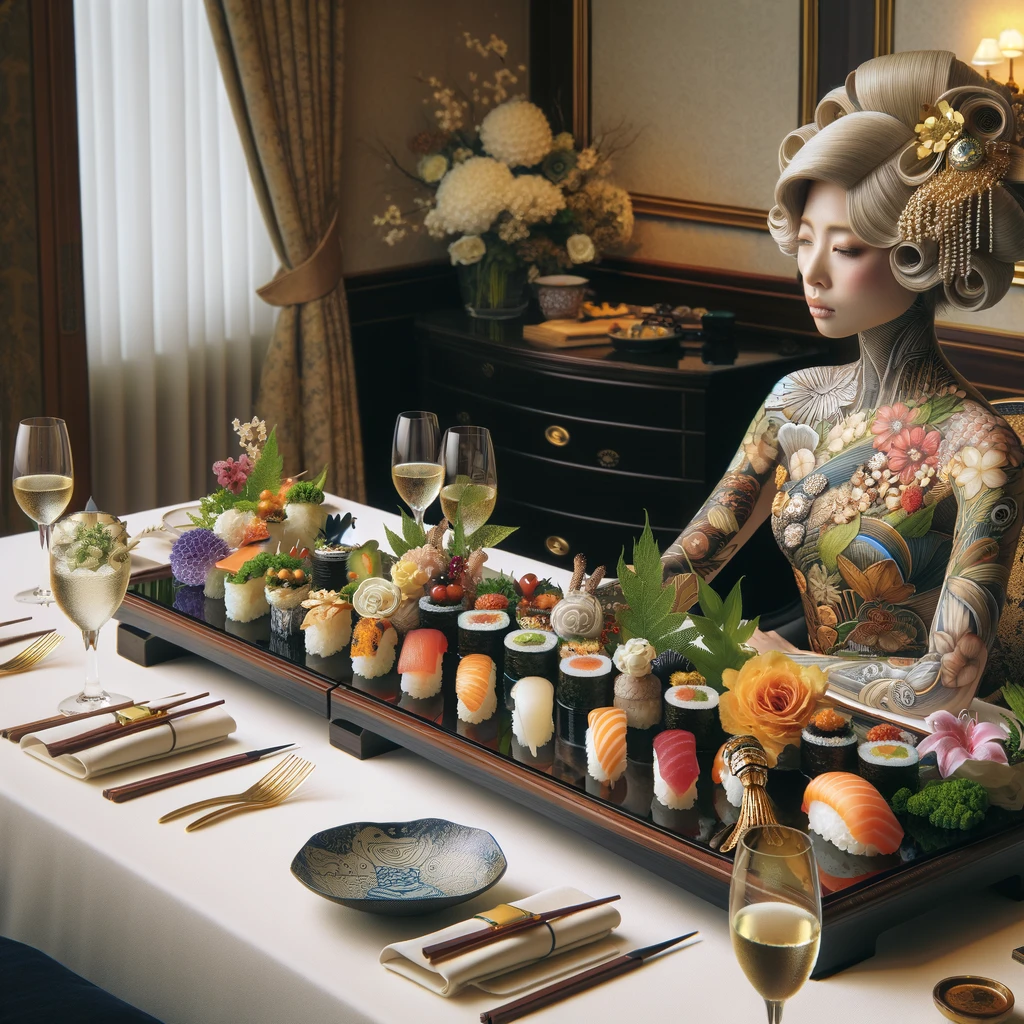Nyotaimori, also known as body sushi or nude sushi, is a fascinating and controversial dining experience that combines culinary art with an unconventional presentation. This practice involves serving sushi on the body of a nude model, creating a blend of visual and gastronomic delight. This article explores the origins, cultural significance, modern perspectives, and what to expect if you decide to experience Nyotaimori.
History and Origins
Nyotaimori has its roots in Japan and dates back to the samurai era. Originally a practice among the elite, it was used to celebrate victories and special occasions.
- Samurai Celebrations
- Elite Gatherings: Nyotaimori was a way to honor samurai victories with a luxurious and unique dining experience.
- Ritualistic Element: The practice was deeply ritualistic, symbolizing luxury, power, and indulgence.
- Evolution Over Time
- Modern Interpretation: In contemporary settings, Nyotaimori has evolved into a performance art and a novelty dining experience, attracting tourists and food enthusiasts.
- Cultural Shifts: From a symbol of elite celebrations to a form of entertainment, Nyotaimori has seen various cultural shifts.
Cultural Significance
Nyotaimori is not just a dining experience; it carries significant cultural and symbolic meanings.
- Art and Aesthetics
- Presentation: The presentation of sushi on the human body is considered an art form, emphasizing the aesthetics of both the food and the human form.
- Skill and Precision: The arrangement of sushi requires high skill and precision, showcasing the chef’s expertise.
- Symbolism
- Life and Nourishment: The human body represents life and vitality, serving as a vessel for nourishment.
- Luxury and Indulgence: Nyotaimori embodies luxury, sensuality, and indulgence, making it a unique high-status dining experience.
Modern Perception and Controversy
Nyotaimori has sparked debates and controversies, particularly in the context of modern values and ethics.
- Cultural Appreciation vs. Objectification
- Cultural Appreciation: Some view Nyotaimori as a way to appreciate Japanese culture and culinary arts.
- Objectification and Ethics: Critics argue that it objectifies the human body, particularly women, raising concerns about consent, dignity, and exploitation.
- Health and Hygiene
- Hygienic Practices: Strict hygienic practices are followed to ensure safety, such as using plastic barriers and ensuring the model is clean.
- Regulations: In some places, regulations and guidelines ensure the practice meets health and safety standards.
- Legal and Social Implications
- Legal Restrictions: Nyotaimori is subject to legal restrictions in some regions due to its controversial nature and potential health risks.
- Social Acceptance: Social acceptance varies, with some embracing it as a novelty and others rejecting it due to ethical and moral concerns.
Experiencing Nyotaimori
For those interested in experiencing Nyotaimori, it is essential to approach it with respect and understanding of its cultural context.
- Finding Authentic Experiences
- Research: Look for reputable establishments that offer Nyotaimori, ensuring they adhere to ethical practices and hygienic standards.
- Cultural Sensitivity: Approach the experience with cultural sensitivity and respect for the traditions and individuals involved.
- Understanding the Etiquette
- Respect the Model: Treat the model with respect and dignity, understanding their role as part of the artistic presentation.
- Follow Guidelines: Adhere to any guidelines or instructions provided by the establishment to ensure a respectful and hygienic experience.
- What to Expect
- Atmosphere: Expect a serene and carefully curated environment designed to enhance the visual and sensory experience.
- Dining Experience: Enjoy a unique combination of culinary artistry and performance, where the focus is as much on the presentation as it is on the food itself.
Conclusion
Nyotaimori, or body sushi, is a fascinating and multifaceted practice that blends culinary art with cultural traditions. While it offers a unique dining experience, it also raises important questions about ethics, objectification, and cultural appreciation. By understanding its history and cultural significance, and approaching it with respect and sensitivity, one can appreciate the artistry and complexity of Nyotaimori. Nyotaimori Body Sushi









